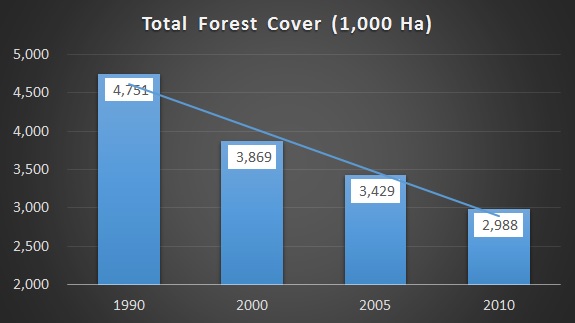
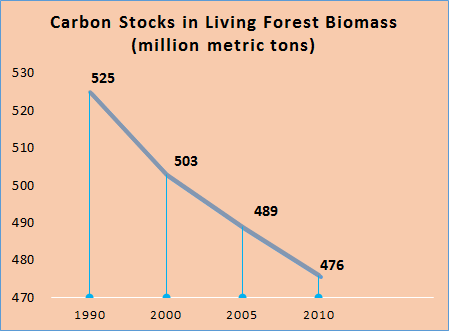
Most of the forest land in Kenya is under community and private ownership (77%) while the rest are under public (23%). Private plantations cover 47% of the total forest plantation area, which is almost equal to the area of stocked plantations under public management (53%)
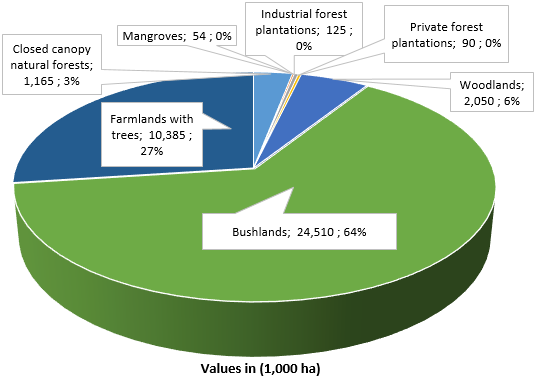
18,000 people are directly employed by the forestry sector, according to 2011 FAO data.
The forestry sector contributed USD 365.1 million to the economy in 2011, which is approximately 1.2% of the GDP.
The demand for building construction, furnishing and other end uses for forest products have grown faster than the supply from Kenya’s forests, resulting in an increase in net imports. The two main direct value addition industries from wood from Kenya’s forests are saw mills and plywood industries
Between 1990 and 2000, Kenya lost approximately 1.2 million ha of forest land, equivalent to 25% of forest cover.

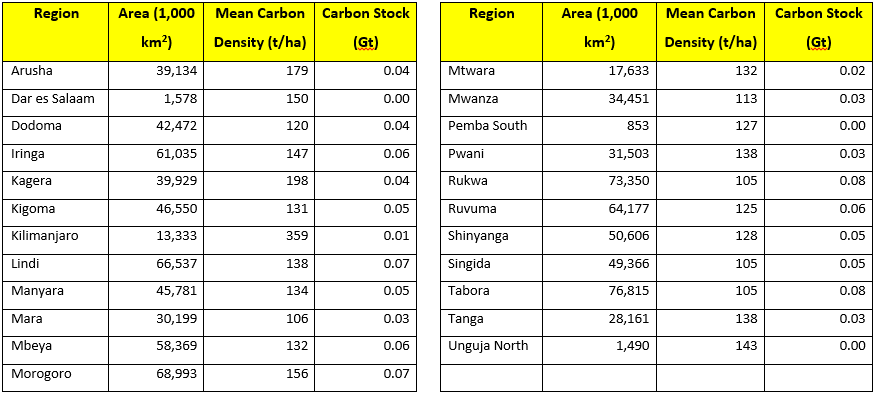
Monitored by Ministry of Agriculture, Ministry of Planning, Economy and Empowerment (Monitoring of National Strategy for Growth and Reduction of Poverty – NSGRP, also known as MKUKUTA)
How is it Monitored
Using the sibling and checked selectors, we can determine the styling of sibling elements based on the checked state of the checkbox input element. One use, as demonstrated here, is an entirely CSS and HTML accordion element. Media queries are used to make the element responsive to different screen sizes.
Who is Monitoring
Tanzania Forest Services and National Bureau of Statistics HBS/National Census
How is it Monitored
Who is Monitoring
Ministry of Planning, Economy and Empowerment, Ministry of Energy and Tanzania Forest Service
How is it Monitored
Who is Monitoring
Tanzania Forest Service
How is it Monitored
Roads generally result in increased deforestation and degradation (Nepstad et al. 2001). They make the transport of goods possible and economically viable, linking resources and producers to markets at lower costs.
A large proportion of the population depends on forests in some way for their livelihoods or for their fuelwood, this consequently puts pressure on forests and land

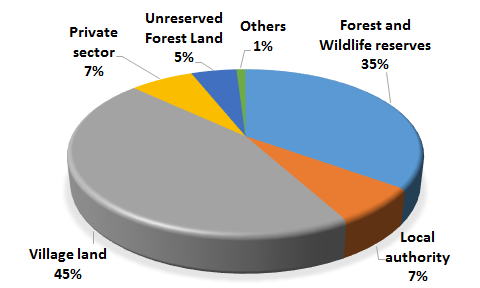
7,000 people are directly employed by the forestry sector, according to 2011 FAO data.
The forestry sector contributed USD 612.9 million to the economy in 2011, which is approximately 2.7% of the GDP.
Trends in forest change from 1990 to 2010 showing an average loss of 403,328 ha per year
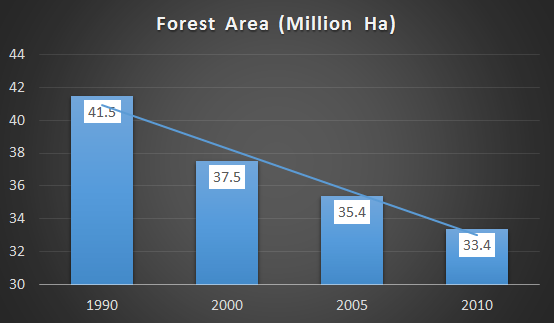
Woodlands occupy 93% of total forested land
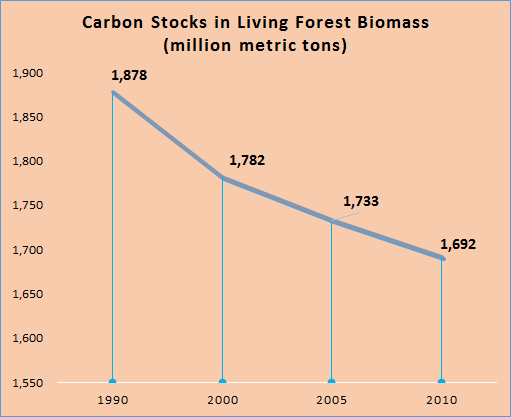
Agents and Indirect Causes
Main degradation activities
Main deforestation activities
Results
Number of forest concessions issued per year, 1998–2010
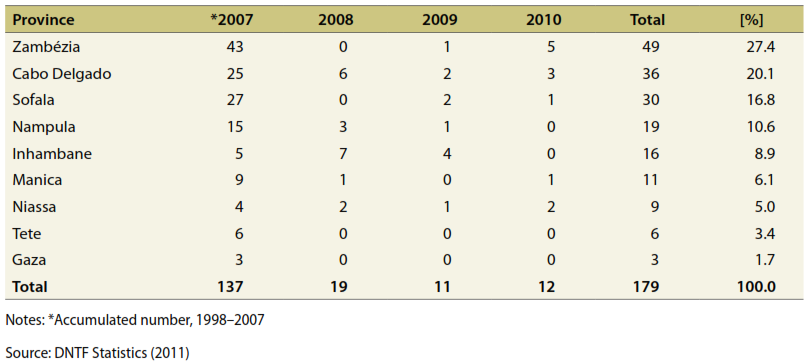

22 thousand people are directly employed by the forestry sector, according to 2011 FAO data.
The forestry sector contributed USD 330.3 million to the economy in 2011, which is approximately 2.8% of the GDP.
Types of taxes by logging companies, annual revenues from 2012-2016
Conversion rate USD$ 1 = 70.59 Mts
Between 1990 and 2010 Mozambique lost 10.0% of its forest cover, around 4,356,000 ha, whereby the average loss per year is 217,800 ha.

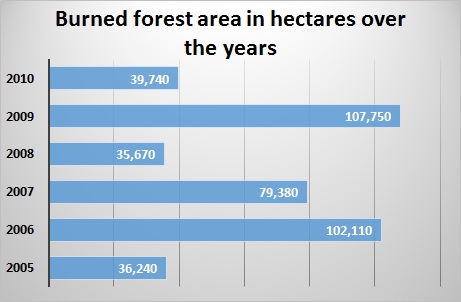
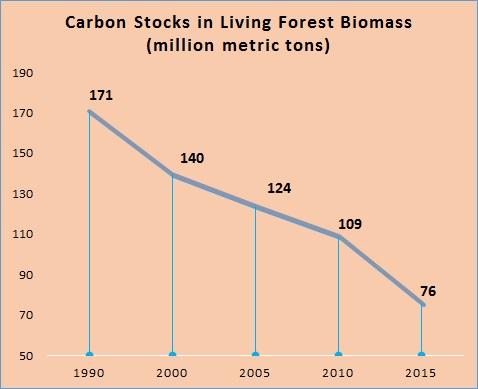
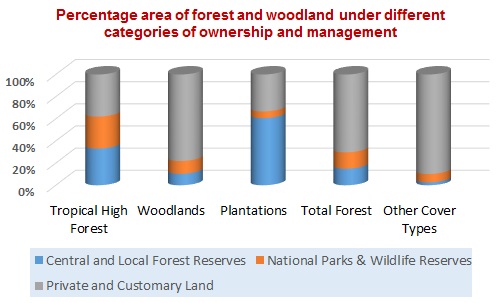
12,000 people are directly employed by the forestry sector, according to 2011 FAO data.
The forestry sector contributed USD 589.9 million to the economy in 2011, which is approximately 3.4% of the GDP.
Trends in forest change from 1990 to 2010
